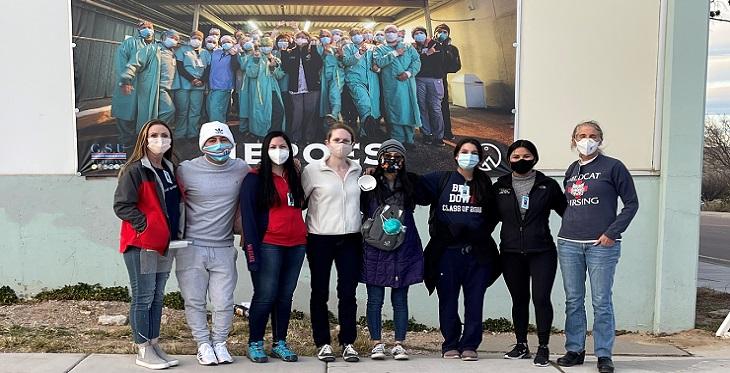Does it surprise you that some clinicians are NOT all that excited to continue to provide care without being in the same room with a patient? Virtual care includes care by video, telephone, email, text/chat, remote monitoring, social media, mobile apps, artificial intelligence and more! More than a decade ago, when I implemented video visits for one region of a large healthcare organization, one-to-one training was provided to approximately 1000 physicians, Advanced Practice Nurses and Physician Assistants who provided scheduled, outpatient care - primary care, medical and surgical specialties. Each of the trainees was given a webcam. One year after training was completed, only 70 of these trained clinicians had provided care by video at least once. Note that reimbursement was not an issue for these clinicians. They were and still are salaried, with incentives based on clinical outcomes and patient satisfaction.
Southwest Telehealth Resource Center Blog


Let’s do more interprofessional consultations! And let’s start by calling them e-consults.
What are e-consults?
Electronic consults (e-consults) are asynchronous clinician-to-clinician exchanges that are used when there is not a need for a face-to-face (in person or telehealth) visit between a clinician/specialist and a patient. Under the umbrella of telehealth, e-consults are considered a store and forward option that uses telephone, Internet and/or an electronic health record (EHR). Patient information that has been gathered and documented is provided by the treating/requesting clinician to a consultative physician with a request for medical advice and/or an opinion. According to the Centers for Medicare & Medicaid Services (CMS) “…these inter-professional consults are typically initiated by a primary care practitioner to a specialist for a low acuity, condition-specific question that can be answered without an in-person visit. CMS also considers e-consults as assessment and management services.

For many Americans, their first personal experience of being a hospital patient quickly becomes a crash course in the importance and value of having a skilled and dedicated bedside nurse. At a higher level, this points to the importance of a sufficient nursing staff which impacts the entire workflow of the hospital. Without sufficient bedside nurses, patients in the Emergency Room and Intensive Care Units cannot be moved to the floors, resulting in longer waiting times for care for those newly arriving. Beds that cannot be staffed are beds that do not exist for all practical purposes. Unfortunately, a shortage of nurses has long been a problem for hospitals across the United States. The coronavirus pandemic has brought this challenge to an entirely new level, resulting in a request by the American Nurses Association that the U.S. Department of Health and Human Services declare the current nursing staffing shortage a national crisis.

Why am I ALWAYS crying? I swear right when I think to myself… “I got this, I GOT THIS”. Tears, puddles, Niagara Falls… pouring out. Every time I’m asked to share my experience. Why cry? Because of all the LOVE I have as a healthcare provider and the genuine connections I made during our crisis immersion in collaboration with the Gallup Indian Medical Center (GIMC), Gallup, NM.

The United States and the world have seen a dramatic increase in the use of telemedicine since the inception of the COVID-19 public health emergency due in most part to stay at home restrictions for both providers and patients. Prior to this, telemedicine was used in a wide variety of clinical and related patient care applications for at least 30 years, and had been seeing steady but not exponential growth. In many cases programs were initiated quite rapidly using readily available and often low-cost equipment and tools, unless there was already an existing program and platform in place. Further, the use of telemedicine was facilitated at the state and federal levels but widespread waivers and measures being put into place to reduce barriers that were previously in place such as changes in reimbursements, requirements regarding patient and provider locations, cross-state licensure and privacy/security requirements.

